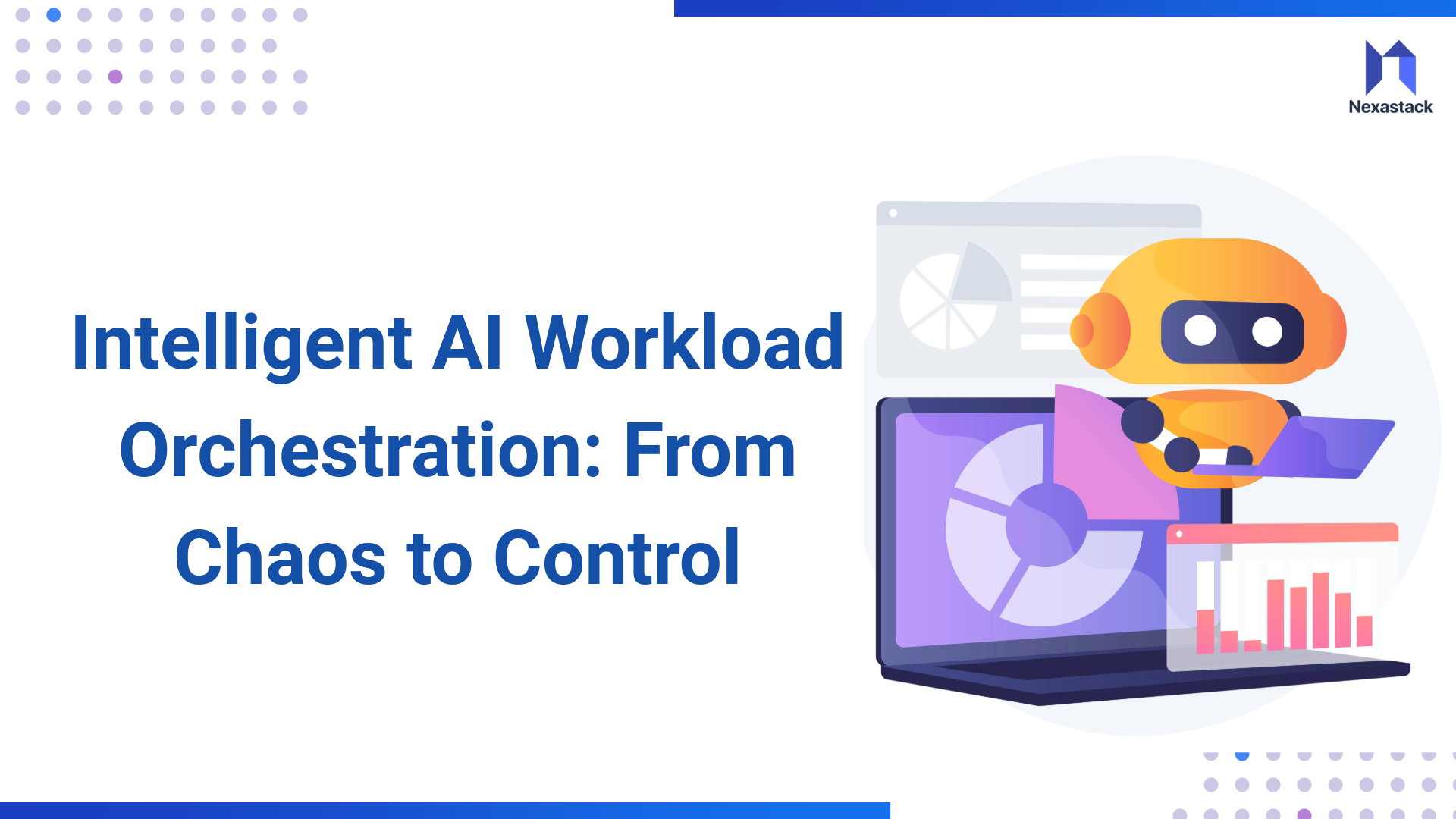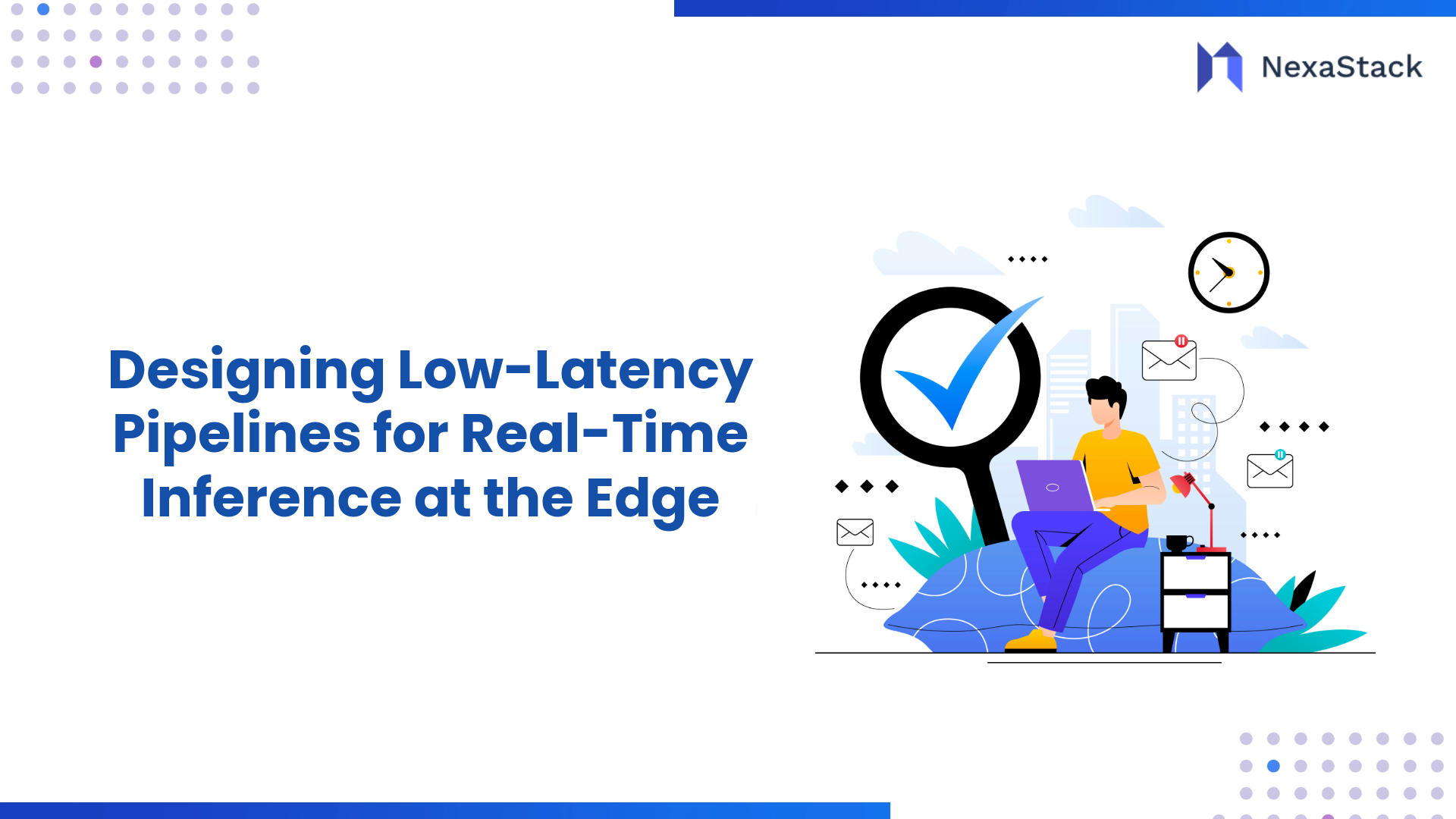As AI models move from experimentation to production, the focus shifts from training accuracy to inference efficiency. Ensuring that models perform optimally in real-time environments is critical for delivering seamless and scalable AI experiences. Inference server integration is a key step in this process, allowing models to serve predictions reliably, with low latency and high throughput.
This blog outlines a performance-driven approach to integrating inference servers into modern AI systems. Whether deployed in cloud-native platforms, edge environments, or hybrid architectures, the configuration of inference servers directly affects application responsiveness and cost-efficiency. Popular tools like NVIDIA Triton Inference Server, TensorFlow Serving, TorchServe, and ONNX Runtime offer distinct capabilities for managing multi-model serving, dynamic batching, and resource allocation.
A strategic integration goes beyond selecting the right tool. It involves optimising model deployment workflows, such as using asynchronous requests, enabling parallel processing, configuring hardware acceleration, and fine-tuning memory management. These techniques help minimize compute bottlenecks, balance load across resources, and improve overall throughput under demanding production loads.
This blog will explore key performance strategies for effectively deploying inference servers. From containerized deployments to real-time monitoring performance metrics, we’ll cover best practices that align with enterprise-grade requirements. Whether you're deploying computer vision, NLP, or generative AI models, this guide will help you design inference pipelines that are efficient, scalable, and production-ready.
Key Insights
Inference Server Integration is the process of optimizing model deployment infrastructure for reliable, low-latency, and scalable inference in production.
Load Balancing
Distributes inference requests efficiently across resources to reduce latency.
Model Optimization
Applies techniques like quantization and pruning to improve speed and reduce resource usage.
Throughput Scaling
Uses batching and concurrency to handle high request volumes effectively.
Resource Utilization
Tracks compute usage to ensure consistent performance and avoid overload.
Value Proposition: Why Specialized Inference Servers Matter
Machine learning is resource-intensive, especially when it comes to inference—i.e., the process of making predictions based on trained models. While training happens less frequently, inference is continuous, often running 24/7 in production environments. General-purpose servers can’t keep up with the speed and efficiency needed for these real-time predictions. Specialised inference servers are optimised for exactly this task. They use hardware accelerators like GPUs, TPUs, or custom ASICs to process vast amounts of data in parallel and deliver rapid insights.
Here’s what makes them valuable:
-
Low latency for real-time applications like autonomous vehicles or personalized recommendations.
-
High throughput for handling large volumes of prediction requests simultaneously.
-
Energy efficiency, as they’re purpose-built to deliver more performance per watt than traditional servers.
-
Smaller footprint when scaled—fewer servers doing more work.
-
The result is a serious boost in speed, cost-efficiency, and scalability, especially in industries where milliseconds matter.
Integration Strategy: Building Around the Core ML Stack
Introducing specialized inference servers isn’t about replacing your entire ML infrastructure but extending and enhancing it.
Think of them as performance boosters within a larger ML ecosystem that includes:
-
Data ingestion pipelines
-
Model training platforms (Azure ML, TensorFlow, PyTorch)
-
Storage and data lakes
-
DevOps tools and CI/CD pipelines
-
Monitoring and governance systems
The integration approach is straightforward if well-planned:
-
Containerization: Package your models using containers (like Docker) to run consistently across environments.
-
Orchestration: Use Kubernetes or similar tools to deploy models across inference servers.
-
Routing: Set up innovative traffic management using APIs or load balancers to direct prediction requests to specialised hardware when needed.
-
Edge integration (optional): Deploy parts of the inference layer at the edge for ultra-low-latency use cases.
By layering inference servers into your existing stack, you keep the flexibility and visibility of your current setup while gaining powerful new performance capabilities.

A flow diagram illustrating a layered ML infrastructure with highlighted inference servers connecting data sources to application layers.
Implementation Requirements: What You’ll Need to Get Started
While inference servers are powerful, deploying them successfully means checking a few key boxes first.
Hardware Choices
Depending on your use case, you’ll choose from:
-
GPU-based servers (NVIDIA A100, T4) for general AI workloads
-
TPUs (by Google) for TensorFlow-optimised inference
-
FPGAs for low-latency, high-efficiency inference
-
ASIC-based servers for ultra-specialised needs
Software Stack Compatibility
Ensure your models and toolkits are compatible with the server hardware. Many frameworks like TensorRT, ONNX Runtime, or NVIDIA Triton are designed to run efficiently on inference hardware.
Model Optimization
Before deployment, use techniques like:
-
Model quantization
-
Pruning
-
Graph optimization
These steps shrink the model’s size and reduce computation load, letting it run faster and more efficiently on inference servers.
Infrastructure Readiness
Do you have:
- A secure environment for deploying inference workloads?
- Scalable storage solutions?
- Network bandwidth to support real-time prediction traffic?
Ensure your broader infrastructure can keep up with the speed of the new inference layer.
Performance Benefits: Real-World Gains You Can Expect
Let’s talk results. Organizations that have moved to specialized inference servers report measurable benefits across the board:
-
Speed: In some cases, model inference time has dropped by over 80 per cent, especially in deep learning applications.
-
Throughput: Depending on the model type, a single inference server can often process millions of predictions per second.
-
Cost savings: Optimising performance requires fewer servers, cutting hardware, energy, and cooling costs. For cloud users, this also translates to lower compute bills.
-
Reliability: With purpose-built hardware, inference servers often show higher uptime and lower failure rates than general-purpose alternatives.
-
Use case expansion: Faster inference opens up doors for use cases that weren’t practical before—like instant fraud detection, live anomaly detection in IoT, or real-time personalization in retail.
Moreover, organizations can run more models simultaneously without compromise with specialised inference hardware. This multi-model concurrency means you can deploy different AI services side-by-side—like a chatbot, image classifier, and recommendation engine—all within the same infrastructure.
 Real-world success stories from companies like Pinterest, Netflix, and BMW showcase how inference optimization translates into faster user experiences, more dynamic services, and more responsive operations.
Real-world success stories from companies like Pinterest, Netflix, and BMW showcase how inference optimization translates into faster user experiences, more dynamic services, and more responsive operations.
Governance Framework: Keeping It Secure, Compliant, and Scalable
As with any tech investment, deploying inference servers at scale requires strong governance. Here's what to keep in mind:
-
Security: Use role-based access controls (RBAC) and identity management. Encrypt model weights and input/output data in transit and at rest. Monitor workloads for unusual activity with anomaly detection.
-
Compliance: If you work in a regulated industry (healthcare, finance, etc.), ensure that inference workflows comply with standards like HIPAA, PCI DSS, or GDPR.
-
Version control: Model drift is real. Use versioning tools (MLflow or DVC) to track changes and roll back if needed.
-
Monitoring and observability: Leverage tools like Prometheus, Grafana, or Azure Monitor to monitor performance, errors, and latency. Alerts can help you catch issues before they hit production.
Furthermore, you’ll want to establish automated model validation steps during deployment. This ensures that models are fast, accurate, and aligned with business intent.
Another overlooked aspect is data governance. With inference happening at scale, having a clear map of what data flows through your models helps with auditability and trustworthiness, especially in regulated environments.
You should also plan for role separation, where different teams manage responsibilities like model validation, infrastructure provisioning, and performance tuning to ensure accountability. Establishing guardrails through automated policies can prevent the deployment of models that don’t meet defined benchmarks for fairness, latency, or accuracy.
Scalability becomes easier when governance is baked into the system, allowing teams to focus on innovation rather than reinventing the wheel each time they scale a new use case.
ROI Measurement: Proving the Business Value
Now for the big question—Is it worth it? The answer usually depends on your ability to track ROI. Here are key metrics you should monitor post-deployment:
-
Time-to-inference: Compare pre- and post-deployment latency for your core models. A drop in response time can be directly tied to user experience improvements or increased automation.
-
Use case velocity: How many new ML use cases can you enable with the increased inference capacity? More capabilities often mean more revenue or efficiency gains.
-
Cost-per-inference: Measure the cost per prediction before and after optimization. Reduced compute time and fewer servers needed equal real savings.
-
Model accuracy over time: Because inference servers allow faster updates, your models stay more current. This typically leads to better prediction accuracy, especially in fast-changing domains like finance or e-commerce.
-
Business KPIs: Ultimately, tie your model’s performance to business outcomes—faster fraud detection, higher click-through rates, reduced downtime, better patient outcomes, etc.
You might also want to consider qualitative ROI, such as developer satisfaction, faster iteration cycles, and improved team productivity. These may be harder to measure, but directly affect long-term innovation velocity.
Organisations can also establish A/B testing environments with inference hardware to demonstrate concrete performance deltas between legacy and optimised models. Pairing this with dashboard analytics and stakeholder reports provides ongoing visibility into ROI, helping justify continued investment.
Final Thoughts: Inference as a Strategic Advantage
Inference is no longer just a technical task—it’s a strategic pillar for any business using AI at scale. When integrated thoughtfully into your broader ML infrastructure, specialised inference servers can turn good models into great ones and unlock real-time intelligence at a whole new level.
This isn’t just about shaving off milliseconds. It’s about opening up new possibilities:
- Smarter customer experiences
- Proactive business operations
- Safer, faster decision-making in mission-critical environments
We’re moving into a future where AI is ambient—running in the background of every app, device, and interaction. Inference servers make that possible. Businesses that embrace specialized infrastructure now will only gain a sharper competitive edge.
As AI scales, performance will matter just as much as accuracy. In this new AI-powered economy, inference is not an afterthought. It’s the frontline. And with the proper infrastructure, your business will be ready to lead from the front.
Next Steps with Inference Server Integration
Talk to our experts about implementing compound AI system, How Industries and different departments use Agentic Workflows and Decision Intelligence to Become Decision Centric. Utilizes AI to automate and optimize IT support and operations, improving efficiency and responsiveness.


